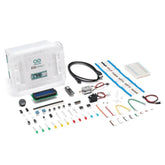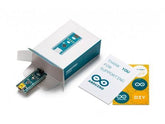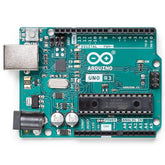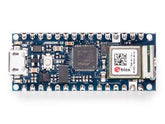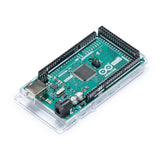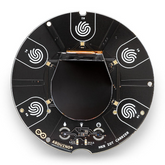What is Arduino in IoT
Summary
Imagine your coffee maker starting automatically when your alarm clock goes off, or your house plants watering themselves when their soil gets too dry.
These are some of the examples of Internet of Things (IoT), where everyday objects are given a digital voice to communicate and act intelligently.
But how do these objects get their "smarts"? Often, the answer lies in a small, simple, yet powerful piece of technology called Arduino.
Just as a brain controls a body, Arduino can act as the brain for an electronic device, reading information from the world and making decisions.
This blog will explore the relationship between Arduino and the IoT, breaking down what they are, how they work together, and why this combination has become a cornerstone for inventors, hobbyists, and professionals looking to build the next generation of smart devices.

What is Arduino?
Arduino is an open-source electronics platform based on easy-to-use hardware and software. Think of it as a set of building blocks for creating interactive electronic objects.
It consists of two main parts: a physical programmable circuit board, often referred to as a microcontroller, and a piece of software, or Integrated Development Environment (IDE), that runs on your computer.
You use the IDE to write and upload computer code to the physical board. This code tells the board what to do.
What is IoT?
The Internet of Things (IoT) is a giant network of interconnected physical objects. These aren't just computers and smartphones, but everyday items like watches, refrigerators, cars, and even streetlights, that have been embedded with sensors, software, and other technologies.
The purpose of this embedding is to allow them to connect and exchange data with other devices and systems over the internet.
Essentially, IoT gives a digital identity to physical objects, allowing them to be monitored and controlled remotely. A fitness tracker on your wrist measures your heart rate and sends it to an app on your phone.
A smart thermostat in your home learns your schedule and adjusts the temperature to save energy, which you can control from anywhere in the world.
These are all examples of IoT devices in action, working behind the scenes to make our lives more efficient, convenient, and data-driven.
How it Works?
To understand how IoT with Arduino works, imagine you want to build a smart plant watering system. The process breaks down into a few key steps that form the backbone of most IoT projects.
This workflow demonstrates how the Arduino microcontroller in IoT serves as the crucial link between the physical world and the digital network.
- Sensing: First, you need to gather information from the physical world. In our example, a soil moisture sensor is connected to the Arduino board. The sensor's job is to "sense" or measure the moisture level in the soil and convert that physical property into an electrical signal that the Arduino can understand.
- Processing: The Arduino board receives this signal. The code you've uploaded to the Arduino—its "brain"—reads the signal and processes it. Your code might say, "If the moisture level drops below a certain threshold, then it's time to water the plant." This decision-making happens right on the board.
- Connecting: To be an IoT device, the system needs to connect to the internet. While some basic Arduino boards need an extra component called a "shield" to connect, many newer boards have Wi-Fi capabilities built-in. The Arduino uses this connection to send and receive data from an internet-based service or cloud platform.
- Acting: Based on the processing step, the Arduino takes action in the physical world. It might send a signal to a small water pump, turning it on for a few seconds to water the plant. It could also send a notification to your phone via the internet, telling you the plant has been watered. This ability to both sense and act is what makes IoT systems so powerful.
What is Arduino in IoT?
So, what is the specific role of Arduino in IoT? In the vast ecosystem of the Internet of Things, Arduino functions as the accessible and versatile brain for creating custom IoT devices.
It is the component that bridges the gap between simple electronic components and the vast network of the internet.
The combination of Arduino and Internet of Things has democratized the creation of smart devices, taking it out of the exclusive realm of large corporations and putting it into the hands of individual creators.
When building Arduino for IoT projects, the Arduino board acts as the central hub. It gathers data from sensors, makes local decisions, controls actuators like motors and lights, and, most importantly, communicates with the internet.
This communication can be two-way: it can send sensor data to a cloud server for storage and analysis, or it can receive commands from a cloud application or a user's smartphone to trigger an action. This makes Arduino an essential tool for rapid prototyping and development of new IoT concepts.
Common IoT Projects with Arduino
The versatility of Arduino means it can be used in a huge variety of IoT projects. Its simplicity and low cost make it perfect for everything from simple home automation to more complex environmental monitoring systems. These Arduino IoT Projects are not only great for learning but can also solve real-world problems.
- Smart Home Automation: This is one of the most popular categories. You can build Smart home projects with Arduino such as smart lighting systems that you can control with your phone, automated blinds that open and close with the sunrise and sunset, or smart plugs that can turn any appliance into a smart device.
- Environmental Monitoring: Arduino can be used to build weather stations that measure temperature, humidity, and air pressure, then upload that data to the internet for live tracking. Other projects include systems that monitor water quality in rivers or soil conditions on a farm, providing valuable data for agriculture.
- Health and Fitness Gadgets: You can create personalized health monitoring devices, like a heart rate monitor that logs your data to a cloud dashboard or a posture-monitoring device that alerts you when you're slouching at your desk.
- Security Systems: Simple but effective DIY security systems can be built using Arduino. These can involve motion sensors that trigger an alarm and send a notification to your phone, or door/window sensors that let you know if an entry point is breached. Many Arduino projects start here.
Popular Arduino Boards for IoT Development
Not all Arduino boards are created equal, especially when it comes to IoT. While almost any Arduino can be used for an IoT project with the right accessories, some are specifically designed with connectivity in mind, making the process of Arduino IoT development much smoother.
- Arduino Uno: The Arduino Uno is the classic, most recognizable board and a fantastic starting point for learning electronics. However, it does not have built-in internet connectivity. To use an Arduino Uno for IoT, you need to add a "shield"—an accessory board that plugs on top—such as an Ethernet or Wi-Fi shield.
- Arduino Nano: The Arduino Nano family offers the functionality of the Uno in a much smaller package, making it ideal for projects where space is limited. Similar to the Uno, most standard Nano boards require an external module for Wi-Fi or Bluetooth connectivity, but newer versions in the Nano family include it.
- Arduino Mega: The Arduino Mega is like a super-sized Uno, with more memory and many more input/output pins. It's suitable for more complex projects that involve controlling a large number of sensors and actuators, but it also requires a shield for internet access.
- Arduino MKR Family: This series of boards is designed specifically for IoT. The Arduino MKR1000 (and its successor, the MKR WiFi 1010) comes with a built-in Wi-Fi module, making it incredibly easy to connect your project to the internet without any extra hardware. These boards are a top choice for serious IoT applications.
Benefits of using Arduino in IoT Applications
The widespread adoption of Arduino in the IoT space is no accident. It offers a unique set of advantages that make it an attractive option for developers of all skill levels. The ecosystem built around Arduino in IoT provides a solid foundation for innovation.
- Cost-Effective: Arduino boards are exceptionally affordable. A basic board can be purchased for a very low price, and even the more advanced, Wi-Fi-enabled boards are a fraction of the cost of other computing solutions. This makes it a great Low-cost IoT development board for students, hobbyists, and startups on a budget.
- Simplicity and Ease of Use: The Arduino programming language is a simplified version of C++, making it easy to learn. The Arduino IDE is straightforward, and the massive amount of online tutorials and documentation means that help is always just a quick search away for your Arduino IoT applications.
- Strong Community and Ecosystem: Arduino boasts one of the largest and most active communities in the electronics world. This means there is a vast library of pre-written code and compatible hardware for almost any project you can imagine. If you have a problem, chances are someone else has already solved it.
- Flexibility and Prototyping Speed: The platform's modular nature, with its standardized pins and shields, allows for rapid prototyping. You can quickly connect different sensors and actuators to test an idea without needing to design a custom circuit board, dramatically speeding up the development process.
Disadvantages of using Arduino in IoT Applications
Despite its many strengths, Arduino is not the perfect solution for every IoT scenario. It has certain limitations that are important to consider.
- Limited Processing Power: Arduino microcontrollers are designed for simple, repetitive tasks. They have limited processing power and memory (RAM), which makes them unsuitable for computationally intensive applications like image processing, machine learning, or running a complex operating system.
- Connectivity on Basic Boards: As mentioned, popular entry-level boards like the Uno and Nano lack native internet connectivity. Adding a Wi-Fi or Ethernet shield increases the cost, size, and complexity of the project.
- Single-Threaded Operation: Arduino code runs in a single loop, meaning it can only do one thing at a time. This can be a challenge in complex IoT applications that need to manage multiple tasks simultaneously, such as listening for web requests while also monitoring sensors in real-time.
Get Started with Arduino in IoT: Simple, Affordable & Powerful
Ready to build your first smart device? Getting started with Arduino in IoT is easier than you think. With an affordable starter kit and a world of free tutorials at your fingertips, you have everything you need to turn your creative ideas into connected, intelligent inventions. Dive in and discover the power of making things smart.
Conclusion
In the expanding universe of the Internet of Things, Arduino has carved out an indispensable role as the great enabler. It has successfully lowered the barrier to entry for electronics and programming, empowering a global community of makers to experiment, innovate, and build custom solutions to everyday problems.
While it may not have the raw power of a full-fledged computer, its simplicity, affordability, and flexibility make it the ideal tool for a vast range of IoT applications.
From a student’s first blinking LED to a farmer's sophisticated crop monitoring system, the journey into the connected world often begins with a simple but powerful Arduino board.



